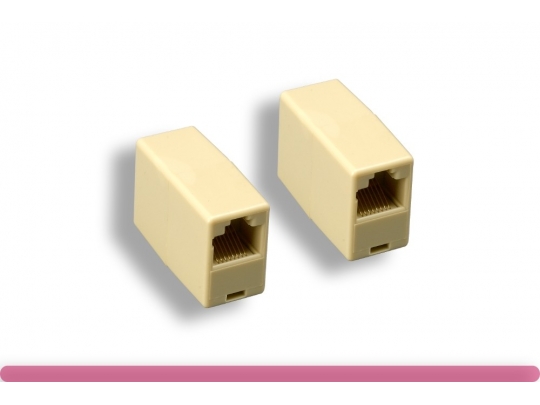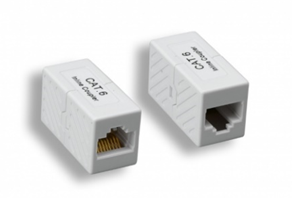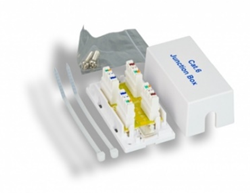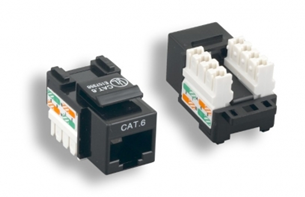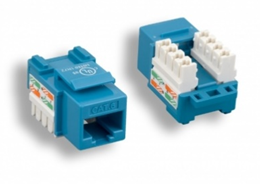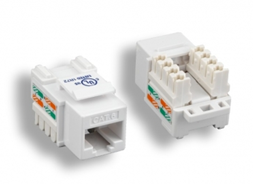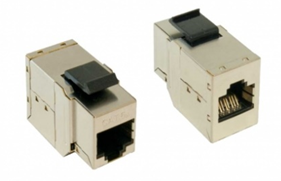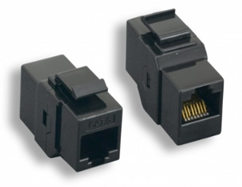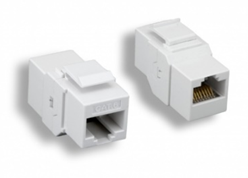| Line number | A0P232-0845 |
|---|---|
| Wire specification | RJ45 Coupler Inline Connector Extender Adapter Female to Female |
Relative RJ45 Jack Products
- Cat.5e
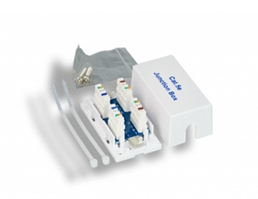 |
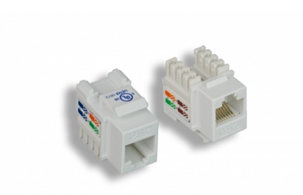 |
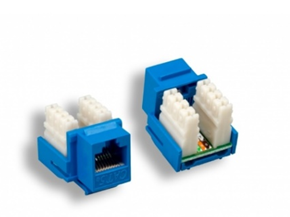 |
| Copper,Box,US,C5E,WH | Keystone Jack,US,8P8C,C5E | Keystone Jack,US,8P8C C5E |
See All Cat.5e Relative Products ﹥
- Cat.6
See All Cat.6 Relative Products ﹥
Why Choose MSL for RJ45 Jacks: Our Features
High-Speed Data Transmission
Gold-Plated Contacts for Enhanced Durability
Tool-Free Installation for Convenience
Certified for Reliable PoE Applications
Compliance with Global Standards
Customizable Zinc Alloy Shielding
For superior protection against EMI, MSL offers customizable zinc alloy shielding. This robust outer shell minimizes external noise, enhancing signal integrity and making the jacks ideal for environments with high electrical interference.Our RJ45 Jack Applications
- Ethernet Keystone Jacks:These are the most commonly used keystone jacks, designed for Ethernet networking. They support various cable categories such as Cat5e, Cat6, and Cat6a, providing reliable connectivity for residential and commercial networks.
- Coaxial Keystone Jacks:These are designed for coaxial cables, often used in television, satellite, and broadband internet connections. They ensure seamless integration into wall plates for clean and organized installations.
- Blank Keystone Jacks:These simple placeholders fill unused ports in wall plates or patch panels. They help maintain a neat appearance and allow for future upgrades or expansions.
- Banana Keystone Jacks:Specifically for audio applications, these jacks are used to connect banana plugs, often for speaker connections in home theater or professional sound systems.
- RCA Keystone Jacks:Designed for audio and video applications, RCA jacks are compatible with RCA connectors and are frequently used in AV setups for televisions and sound systems.
- HDMI Keystone Jacks: These facilitate HDMI cable connections through wall plates, providing a professional look while organizing and concealing cables effectively.
How to Choose the Right RJ45 Connector
Choosing the right RJ45 connectors, whether jacks or plugs, requires careful consideration of several factors to ensure optimal performance and reliability in your networking setup.Compatibility with Cable Type
RJ45 connectors must be compatible with the cable type they will connect to, particularly in terms of Ethernet categories like Cat5e, Cat6, or Cat6a. These categories determine the bandwidth and data transmission speeds the cable and connectors can support.Also, the connector must match the cable's conductor type. Solid conductors, typically used in fixed installations, require connectors that provide firm and secure attachment to avoid signal loss.
On the other hand, stranded conductors, more commonly found in patch cables due to their flexibility, require connectors designed for tighter contact to maintain stable connections. A mismatch between connector and conductor type can lead to unreliable performance and frequent disconnections.
Connector Size and Fit
Size and fit are critical for ensuring that the connectors, whether jacks or plugs, maintain a stable connection without exerting strain on the cable. Ensuring precise sizing also reduces wear and tear on the networking equipment.For jacks, a proper fit ensures the stability of the installation, preventing accidental disconnections or movement that could disrupt network functionality.
For plugs, the outside diameter (OD) capacity of the connector must correspond to the cable size. A mismatch in sizing can lead to loose connections, which might cause data interruptions or physical damage to the cable.
Build Quality and Contact Materials
The durability and quality of materials in RJ45 connectors play a crucial role in their performance.High-quality jacks and plugs often feature 50μ gold-plated contact pins. Gold plating ensures excellent conductivity, reduces data loss, and prevents corrosion, maintaining consistent performance even with frequent use.
In contrast, low-quality connectors with solid copper pins are more prone to oxidation and blackening over time, leading to unreliable connections and potential network issues.
Ease of Installation
Installation requirements vary between different types of RJ45 connectors. For jacks, toolless jacks are highly convenient for quick and straightforward installations, particularly in fieldwork. For plugs, pass-through designs simplify wire alignment and trimming, making them especially suitable for beginners or rapid installations. Considering the installation process beforehand ensures a smoother setup experience and reduces potential errors.
Compliance with Standards
RJ45 jacks and plugs must meet standards like TIA/EIA or ISO/IEC to ensure your network works reliably. Other standards, such as IEC 60603, require RJ45 connectors to withstand over 1,000 insertions without degrading. For professional or large-scale setups, sticking to these standards also means the network will stay reliable and compatible with future updates.What is an RJ45 Connector?
The RJ45 connector, short for "Registered Jack 45," is a standardized interface widely used in Ethernet networking to connect low-voltage devices like computers, routers, and switches. It features an 8P8C configuration—"8 Position 8 Contact"—which accommodates eight pins arranged in a specific color-coded sequence.RJ45 connectors, initially designed for telephone systems, are now essential for modern networking. They enable data transmission through four twisted wire pairs in compatible RJ45 cables. These connectors ensure reliable communication in local area networks (LANs) and support various applications, including data transfer, Voice over IP (VoIP), and streaming.
Compatible with Ethernet cable categories such as Cat5e, Cat6, and Cat6a, these connectors offer varying speeds and bandwidth capacities to suit different networking requirements. They deliver standardized, stable, and efficient performance across various environments.
RJ45 connectors are categorized into two main types: plugs (male) and keystone jacks (female). The RJ45 plug is the connector attached to the end of a network cable, while the keystone jack is typically mounted on wall plates, patch panels, or surface mount boxes, which provide a port for the plug to connect.
Components of RJ45 Jack (Keystone Jack)
The RJ45 keystone jack is designed to provide a stable and reliable port for connecting RJ45 plugs. Its key components include: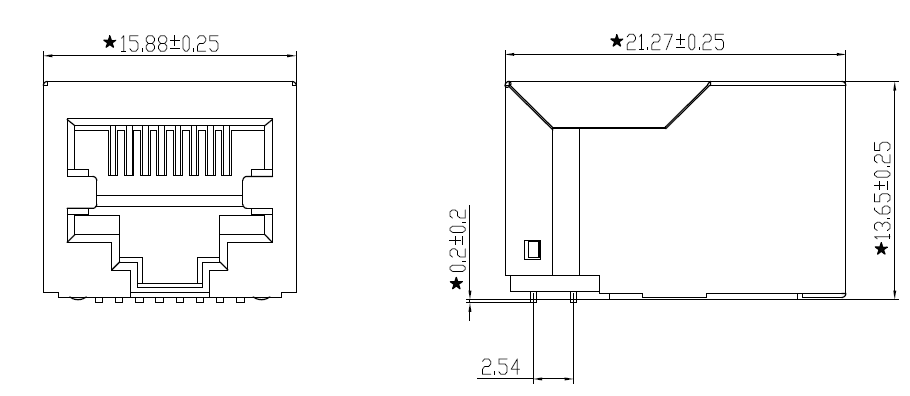
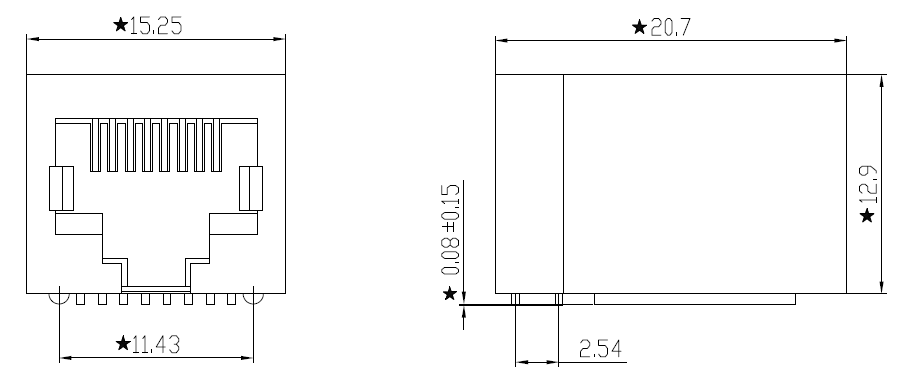
Housing:
A durable outer casing, often made of plastic or metal, that protects internal components. Shielded housings are available to reduce EMI, ensuring enhanced performance in environments with high electrical noise.
Contacts:
Metallic pins inside the jack establish the connection with the plug’s pins. These are often gold-plated to improve conductivity and resist corrosion, ensuring long-lasting and efficient data transmission.
Insulation Displacement Contacts (IDC):
IDC slots secure the individual wires of the Ethernet cable by cutting through the insulation to make a stable electrical connection. This eliminates the need to strip wires manually, making installation faster and more reliable.
Latching Mechanism:
Built-in clips or tabs that securely hold the plug in place once inserted, preventing accidental disconnections and ensuring consistent contact.
Components of RJ45 Plug
The RJ45 plug is an essential component for terminating Ethernet cables and ensuring reliable data transmission. Its key components include:Housing:
A clear or opaque plastic shell that encases the internal components, offering protection and allowing visual inspection of the wire alignment. Some plugs feature strain-relief boots for added durability and flexibility.
Contacts:
Eight metallic pins (gold-plated for enhanced conductivity and corrosion resistance) that align with the corresponding contacts in the jack to enable data transfer. These pins ensure reliable electrical connections for high-speed data communication.
Cable Strain Relief:
A mechanism integrated into the plug to grip the cable jacket, preventing damage to internal wires caused by bending, pulling, or tension.
Pass-Through Feature (Optional):
Found in specific plug types, this allows wires to extend through the front of the plug for easy alignment and trimming, simplifying the termination process.
Wire Guides or Load Bars (Optional):
Some plugs include a separate load bar to help align and secure wires before crimping, ensuring accuracy and improving connection stability.
Common Types of RJ45 Jacks
RJ45 keystone jacks are versatile and designed to support a wide range of networking and media requirements:- Unshielded vs. Shielded Jacks:
Unshielded jacks are commonly used in environments with low EMI, such as homes or offices. They are cost-effective, easy to install, and ideal for general networking needs. In contrast, shielded jacks come with a metallic shield that protects against EMI and crosstalk. These are essential for high-noise environments like industrial spaces or data centers and are necessary when using shielded cables to maintain network performance. - Punch-Down vs. Toolless Jacks:
Punch-down jacks require a punch-down tool for secure wire termination, making them ideal for permanent and stable installations. Toolless jacks, on the other hand, allow for quick installation without the need for tools. They are perfect for rapid deployments or situations where tools are unavailable. - 90-Degree vs. 180-Degree Jacks:
90-degree jacks provide a space-saving right-angle cable entry, which is ideal for tight spaces. In contrast, 180-degree jacks offer a direct cable connection, making them suitable for standard installations where space is not a concern.
Common Types of RJ45 Plug
RJ45 plugs come in several types, each catering to specific installation scenarios and performance needs:- Shielded vs. Unshielded: Shielded plugs have a metallic casing that protects against EMI, making them suitable for high-interference environments like factories or data centers. Unshielded plugs are the standard choice for regular networking environments where EMI is not a concern.
- Regular vs. Pass-Through: Regular plugs require precise wire trimming and alignment before termination. Pass-through plugs allow the wires to extend through the plug, simplifying alignment and trimming, which is especially useful for quick or less-experienced installations.
- Standard vs. Toolless: Standard plugs require crimping tools for assembly, offering a secure and precise connection. Toolless plugs can be assembled by hand, making them a convenient option for quick setups or environments where tools are unavailable.
- Single-Piece vs. Two-Piece: Single-piece plugs are compact and easy to use, suitable for most straightforward installations. Two-piece plugs come with a separate load bar, which helps organize and align the wires before termination, providing a more secure and accurate connection.
Advantages of RJ45 Connector
RJ45 jacks ensure stable and reliable connectivity by providing secure Ethernet ports that support consistent data transmission without interruptions or signal loss. Their modular design is a key advantage, as it allows keystone jacks to be easily mounted on wall plates or patch panels.This modular design makes installations clean and organized, saving space and improving efficiency, especially in data centers where multiple ports can be consolidated on a single panel. Moreover, the modular nature simplifies maintenance by enabling quick replacements or upgrades and reducing downtime during network changes or modifications.
RJ45 plugs enable efficient cable termination, making connections quick and straightforward. The introduction of pass-through and toolless options has further simplified installation. With a standardized 8P8C configuration, these plugs ensure universal compatibility with Ethernet ports and networking devices, making them easy to use in various setups.
They also support high-speed data transfer, meeting modern Ethernet standards like Gigabit and 10 Gigabit Ethernet for fast and reliable communication. Shielded plugs offer electromagnetic protection, reducing interference and ensuring stable performance even in noisy environments. Also, RJ45 plugs are widely available and affordable, making them a cost-effective choice for both professional and DIY installations.
Disadvantages of RJ45 Connector
RJ45 jacks are crucial for network connectivity but come with some notable limitations. Fragility is a concern, especially for unshielded jacks, which are vulnerable to EMI in high-interference or industrial environments. This potentially affects their performance. Frequent use, such as constant plugging and unplugging, can wear down the contact pins over time, leading to poor connectivity or signal loss.RJ45 plugs also have drawbacks, including installation complexity. Standard plugs require precise wire trimming and the use of crimping tools, which increases the chances of assembly errors. Durability can be an issue as well, particularly in harsh environments, as plastic housings may crack or break under heavy strain or rough handling, especially in outdoor or industrial settings. Finally, scalability is limited, as they are primarily designed for Ethernet networks and may not support newer or more advanced technologies.
Enhance RJ45 Jack Performance with Our Premium RJ45 Cable
As the perfect complement to our high-performance RJ45 jacks, MSL’s RJ45 cable ensures seamless, reliable connections for various networking applications. Designed to deliver exceptional electrical performance and safety, this cable sets a new standard for durability and quality, enhancing the efficiency of your network infrastructure.Certified to the Highest Standards
Our RJ45 cable has passed the rigorous safety testing of the UL444 standard, underscoring its exceptional safety and performance. This certification evaluates the cable's materials, structure, and electrical performance to ensure consistent safety and stability across diverse operating environments.Furthermore, our RJ45 cable is also awarded by the prestigious Electrical Testing Laboratories (ETL), which demonstrates compliance with stringent product safety standards. Beyond confirming safety, the ETL mark indicates that the production facility adheres to strict periodic inspections, guaranteeing consistent product quality over time.
Compared to many RJ45 cables on the market that only meet basic safety requirements, our RJ45 cable achieves both UL444 and ETL certifications, offering superior safety and reliability.
Premium Materials and Advanced Manufacturing
Our cables are crafted using high-quality materials and state-of-the-art production techniques, making them stand out in terms of electrical performance and durability. The material options are tailored to meet different application scenarios.For outdoor use, it features UV-resistant PVC, providing enhanced durability and protection against harsh weather conditions. Indoor installations benefit from LSZH (Low-Smoke Zero-Halogen) materials, which ensure safety by minimizing smoke and halogen emissions in confined spaces.
For industrial applications, the cable is constructed with PTFE or TPU materials, capable of withstanding extreme conditions and offering fire ratings that meet or exceed CMR standards, ensuring reliable performance in even the toughest environments.
Comprehensive Service Assurance
Each MSL RJ45 cable undergoes rigorous testing with professional-grade equipment, including continuity testers, FLUKE meters, and network analyzers, to guarantee optimal performance from production to delivery.In addition, our comprehensive after-sales support system ensures that any customer concerns are resolved promptly, with temporary solutions provided within 24 hours and a detailed root cause analysis and improvement report delivered within three days.
Visit our RJ45 cable page or contact us for more information!
 |
 |
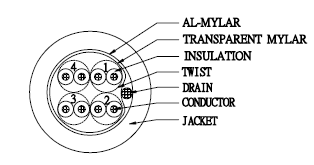 |
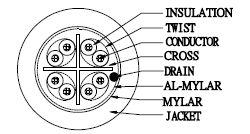 |
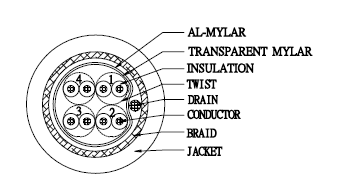 |
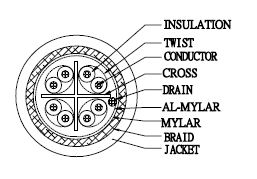 |
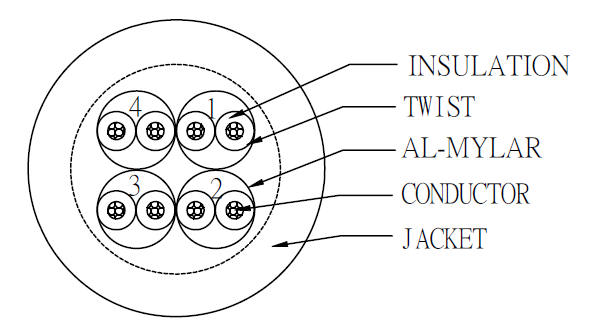 |
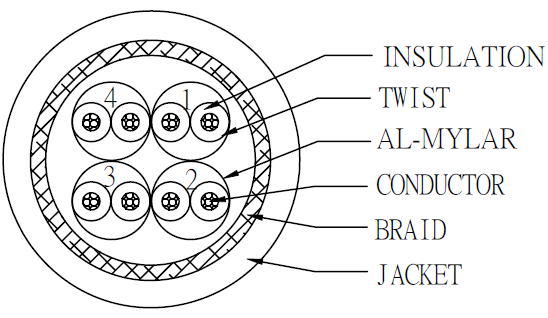 |
MSL - Your Reliable RJ45 Jack Supplier
Upgrade your network infrastructure with MSL Enterprises Corp, your reliable supplier of high-quality RJ45 jacks and RJ45 cables. With over 30 years of experience in the industry, we specialize in providing fully customized RJ45 jacks and cables tailored to meet your unique networking needs. Whether you’re looking for high-speed data transmission in data centers or reliable office network solutions, we offer the flexibility to meet your specifications.At MSL, we take pride in our advanced manufacturing capabilities, offering fast lead times, competitive pricing, and cable products, such as OM3 and OM4, built to the highest standards, including ISO-9001 and ISO-14001 certifications. Our expert team works closely with clients to deliver customized solutions that ensure optimal performance for any application. From unique sizes to specific configurations, we make sure your RJ45 jacks fit your requirements perfectly.
Contact us today to discuss your RJ45 jack needs and discover how our solutions can enhance your network performance!
FAQs
How do I choose between shielded and unshielded RJ45 jacks?
Shielded RJ45 jacks, equipped with a metallic casing, are ideal for environments with high EMI, such as industrial or high-power settings, as they minimize signal disruptions. Unshielded jacks are sufficient for standard residential or office networks, offering a simpler and more affordable solution where EMI is not a concern.
Do I need any special tools to install this RJ45 jack?
Our tool-free design eliminates the need for specialized tools like punch-down tools. You only need basic tools such as wire strippers and diagonal pliers for installation. This design simplifies the process and makes it accessible even to non-professionals.
Are these jacks suitable for environments with high electromagnetic interference (EMI)?
Yes, our shielded RJ45 jacks are specifically designed to function in high-EMI environments. Its metallic shielding effectively blocks electromagnetic disturbances, ensuring stable signal transmission and reliable network performance even in challenging conditions.
Is the jack compliant with industry standards like TIA/EIA or ISO/IEC?
Yes. All our RJ45 jacks are manufactured in compliance with TIA/EIA and ISO/IEC standards. This ensures their quality, compatibility, and reliable performance in structured cabling systems, meeting industry benchmarks for network infrastructure.
Can this jack be reused after removal from a wall plate or patch panel?
Yes, our jacks are designed for durability and reuse. The female connectors can be removed and reinstalled up to 20 times without compromising the integrity or functionality of the connection, making them cost-effective for flexible setups.
Is there a warranty included?
Yes, our products come with a 10-year warranty, ensuring long-term reliability and performance. While the gold plating may develop some discoloration over time due to environmental factors, this does not affect the functionality of the jacks.


